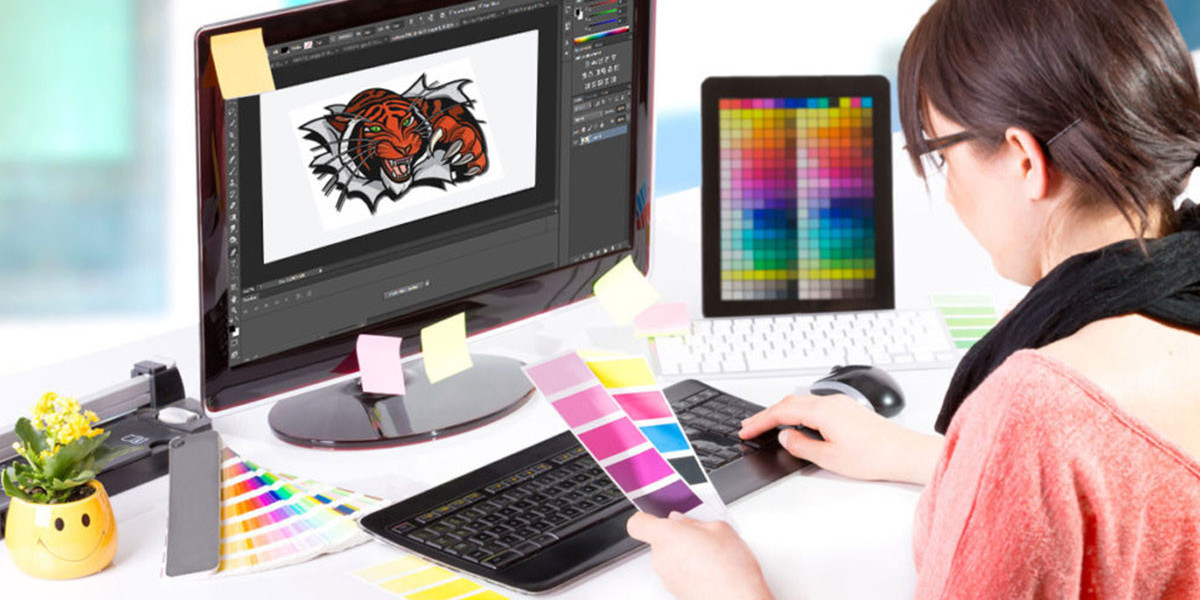Introduction
Embroidery is no longer confined to hand-stitched patterns or basic monograms. As we enter 2025, the industry is experiencing a digital renaissance, largely driven by powerful embroidery digitizer. From hobbyists to industrial production units, the demand for smart embroidery solutions is booming. These digitizers aren't just software tools; they are the bridge between artistic vision and machine execution. This article dives deep into how modern embroidery digitizers are redefining the art of stitching with automation, accuracy, and creativity.
What Is an Embroidery Digitizer?
An embroidery digitizer is a software or tool that translates artwork into a format understandable by embroidery machines. The digitizer determines the stitch type, density, direction, and sequence, converting a simple design into a digital embroidery file, such as .DST, .PES, or .EXP.
Modern embroidery digitizers go beyond manual settings. They now include AI-enhanced features, predictive stitching patterns, and even 3D simulation previews, making the process both efficient and incredibly precise.
The Evolution of Embroidery Digitizing
From Manual to Machine
Traditional embroidery involved painstaking manual work. Then came basic digitizing software, which required technical expertise. Now, modern digitizers combine automation with intuitive interfaces, making professional-quality results accessible to all.
Rise of AI and Automation
In 2025, many digitizers are powered by artificial intelligence. They analyze uploaded artwork, recommend optimal stitch paths, and adapt designs based on fabric type and thread tension. This shift dramatically improves design consistency and reduces human error.
Features of a Modern Embroidery Digitizer
1. AI-Powered Stitch Logic
The latest tools automatically detect shapes and assign the best stitch types.
2. Real-Time Design Simulation
See a digital preview of your design on different fabric types and garment shapes.
3. Cloud-Based Editing
Edit and access your designs from anywhere using online platforms.
4. Fabric-Specific Presets
Choose from a wide range of fabric presets for accurate output—cotton, denim, polyester, etc.
5. Vector-to-Stitch Conversion
Upload a vector file (.SVG, .AI) and watch it turn into a stitch-ready file with minimal editing.
Advantages of Using a Modern Embroidery Digitizer
Speed & Efficiency: Complete digitizing in minutes instead of hours.
High Precision: Minimize trial-and-error in design-to-machine conversion.
Customization: Easily tweak stitch angles, sequence, and layers.
Cost Savings: Reduce material waste through optimized stitching.
Scalability: Ideal for businesses handling bulk orders.
Popular Embroidery Digitizer Software in 2025
| Software Name | Key Feature | Pricing Tier |
|---|---|---|
| Wilcom E4.5 Pro | AI Stitch Advisor | Premium |
| Hatch Embroidery 3 | User-friendly interface | Mid-range |
| Embrilliance Essentials | Multi-format support | Budget |
| PulseID Automation | Mass production support | Enterprise |
| Ink/Stitch | Open-source flexibility | Free |
Who Uses Embroidery Digitizers?
Apparel Brands: To streamline production of branded clothing
Patch Makers: For high-detail custom embroidery patches
Sports Teams: For uniform customization
Corporate Clients: For logo and branding apparel
Crafters & Etsy Sellers: To create personalized products
Step-by-Step: How to Digitize Embroidery Designs
Upload Artwork
Select Fabric Preset
Auto-Assign Stitch Types
Simulate Design in Real Time
Make Adjustments (if needed)
Export File for Machine
Challenges and Solutions
Challenge 1: Learning Curve
Solution: Choose beginner-friendly software and take advantage of tutorials.
Challenge 2: File Compatibility
Solution: Use software that supports multiple machine formats.
Challenge 3: Design Distortion on Fabric
Solution: Use fabric presets and test samples before mass production.
Emerging Trends in Embroidery Digitizing
3D Puff Embroidery Simulation
AI-Based Error Prediction
Touchless Voice Control Interfaces
Blockchain for Design Ownership
Online Marketplaces for Digitized Files
Expert Tips for Better Embroidery Digitizing
Use high-resolution images
Avoid excessive stitch density
Group color blocks logically
Regularly update your software
Always preview the design before stitching
FAQs
Q1: Can a beginner use an embroidery digitizer?
Yes! Many tools offer guided wizards and templates.
Q2: What's the best format for embroidery machines?
.DST and .PES are the most commonly used.
Q3: Are cloud-based digitizers safe?
Most reputable ones offer secure data encryption.
Q4: How much does a digitizer cost?
Anywhere from free (open-source) to $2,000+ for commercial-grade tools.
Q5: Can I create 3D embroidery?
Yes! Look for tools with 3D puff support and real-time simulation.
Conclusion
The embroidery digitizer is no longer a niche tool for experts. In 2025, it is a necessity for anyone serious about textile design. With automation, AI integration, and user-centric features, embroidery digitizers are elevating both creativity and productivity. Whether you're a solo entrepreneur or a large apparel brand, embracing this digital evolution can set you apart in the ever-competitive embroidery landscape.
Now is the time to thread the needle between tradition and technology with a modern embroidery digitizer.












